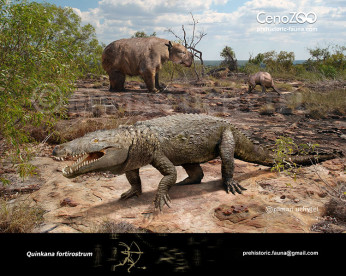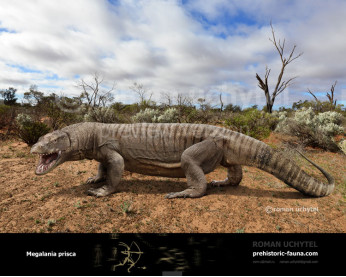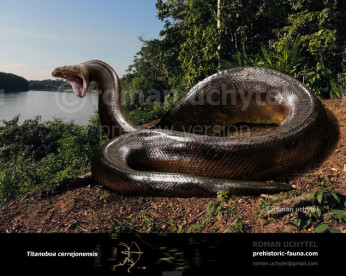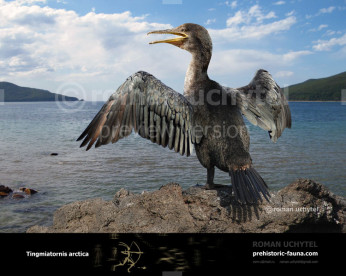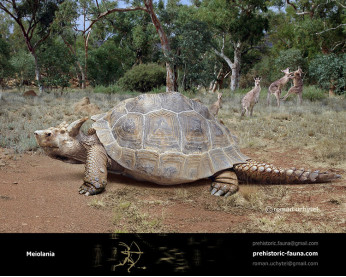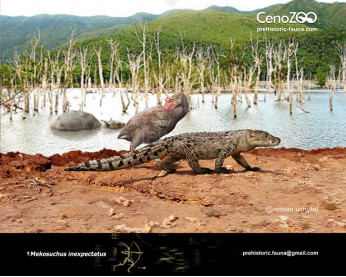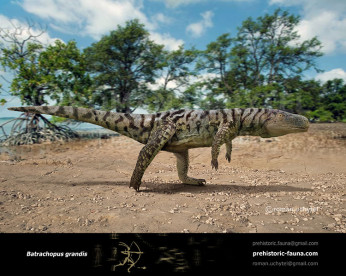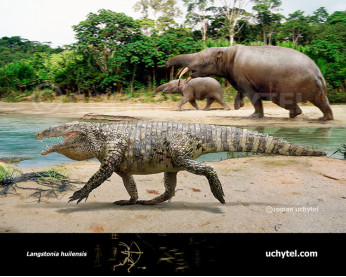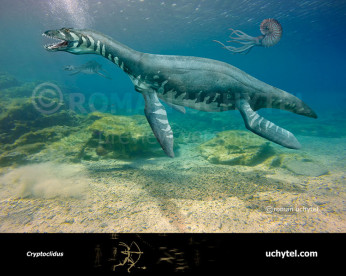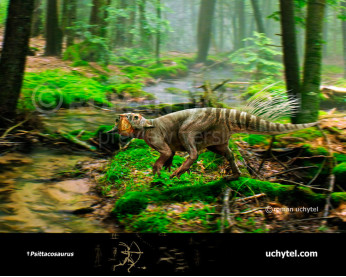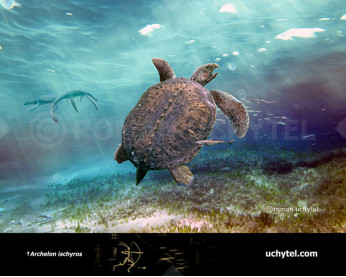Neovenator
2029320293Neovenator (†Neovenator salerii (Hutt, Martill & Barker, 1996))
Clade: Dinosauria
Clade: Saurischia
Clade: Theropoda
Clade: †Allosauria
Clade: †Carcharodontosauria
Family: †Neovenatoridae
Dimensions: up to 7 m length, weight - 800 -1000 kg
Expansion: Early Cretaceous of Europe
Neovenator is a genus of carcharodontosaurian theropod dinosaur. It is known from several skeletons found in the Early Cretaceous Wessex Formation on the south coast of the Isle of Wight, southern England. It is one of the best known theropod dinosaurs from the Early Cretaceous of Europe.
Neovenator measured approximately 7 metres in length, and was of a gracile build, weighing 1 metric ton.
Several traits that once were thought to be unique or apomorphic for Neovenator, subsequent research showed to have been shared by other theropods. The nostrils are large but not uncommonly so. Elevated paired nasal crests are shared with Allosaurus. Denticles continuing over the tooth apex are today known from other species.
In 2015, it was reported that the front of the snout of Neovenator contains a complex system of neurovascular canals, functioning as sensory organs. This trait is also known from Spinosauridae and was there explained as an adaptation for searching prey in water. It was doubted, however, whether Neovenator used its system for the same purpose.
Fossil remains of Neovenator have been found on the Isle of Wight off southern England, and were first discovered in the 20th century. Neovenator perhaps existed alongside other dinosaurs found in the Wessex Formation of the early Cretaceous period, such as Ceratosuchops, Riparovenator, Baryonyx, Polacanthus, Iguanodon and Eotyrannus. The holotype bones were mixed with those of the herbivorous iguanodontian Brighstoneus and in the dig site also remains of fishes, amphibians, lizards, pterosaurs and Goniopholididae were present. Neovenator was likely the apex predator of its ecosystem.
Neovenator (†Neovenator salerii (Hutt, Martill & Barker, 1996))
Clade: Dinosauria
Clade: Saurischia
Clade: Theropoda
Clade: †Allosauria
Clade: †Carcharodontosauria
Family: †Neovenatoridae
Dimensions: up to 7 m length, weight - 800 -1000 kg
Expansion: Early Cretaceous of Europe
Neovenator is a genus of carcharodontosaurian theropod dinosaur. It is known from several skeletons found in the Early Cretaceous Wessex Formation on the south coast of the Isle of Wight, southern England. It is one of the best known theropod dinosaurs from the Early Cretaceous of Europe.
Neovenator measured approximately 7 metres in length, and was of a gracile build, weighing 1 metric ton.
Several traits that once were thought to be unique or apomorphic for Neovenator, subsequent research showed to have been shared by other theropods. The nostrils are large but not uncommonly so. Elevated paired nasal crests are shared with Allosaurus. Denticles continuing over the tooth apex are today known from other species.
In 2015, it was reported that the front of the snout of Neovenator contains a complex system of neurovascular canals, functioning as sensory organs. This trait is also known from Spinosauridae and was there explained as an adaptation for searching prey in water. It was doubted, however, whether Neovenator used its system for the same purpose.
Fossil remains of Neovenator have been found on the Isle of Wight off southern England, and were first discovered in the 20th century. Neovenator perhaps existed alongside other dinosaurs found in the Wessex Formation of the early Cretaceous period, such as Ceratosuchops, Riparovenator, Baryonyx, Polacanthus, Iguanodon and Eotyrannus. The holotype bones were mixed with those of the herbivorous iguanodontian Brighstoneus and in the dig site also remains of fishes, amphibians, lizards, pterosaurs and Goniopholididae were present. Neovenator was likely the apex predator of its ecosystem.


-797x638.jpg)

-70x56.jpg)
